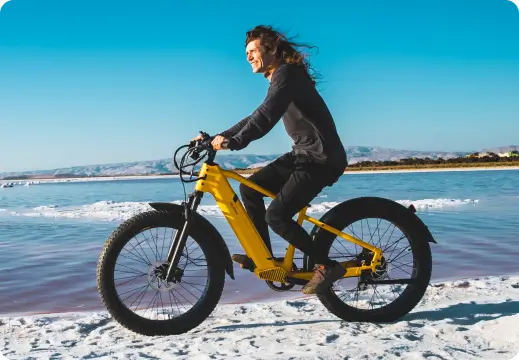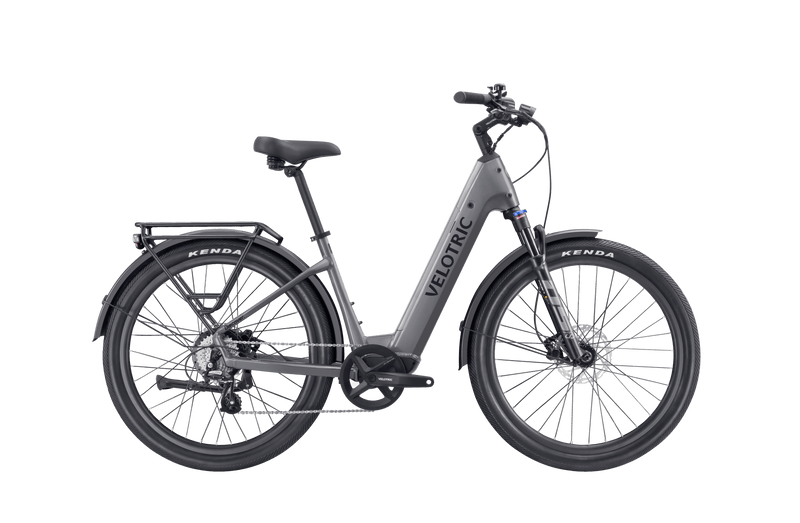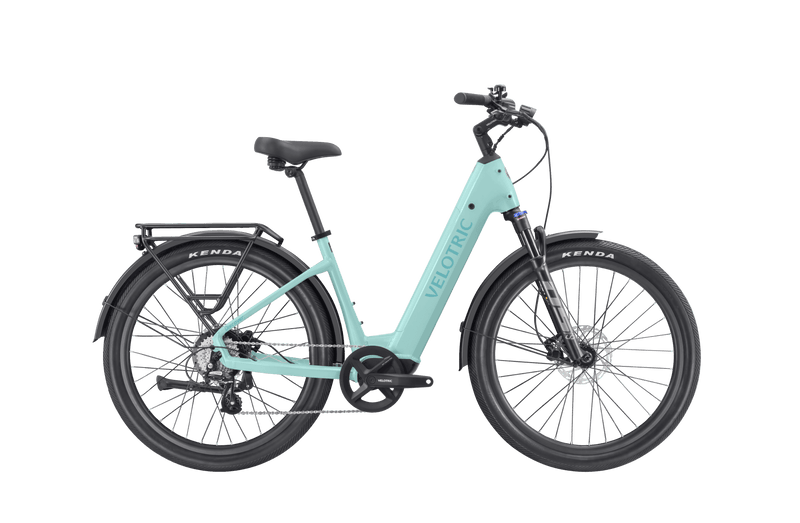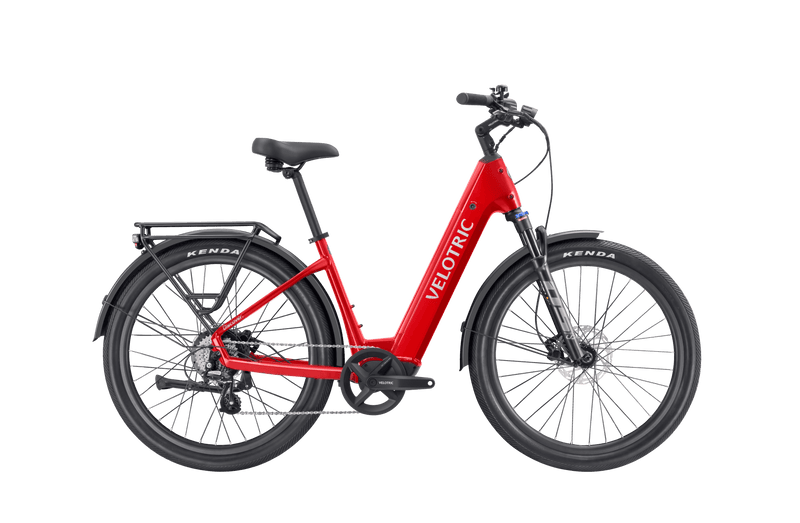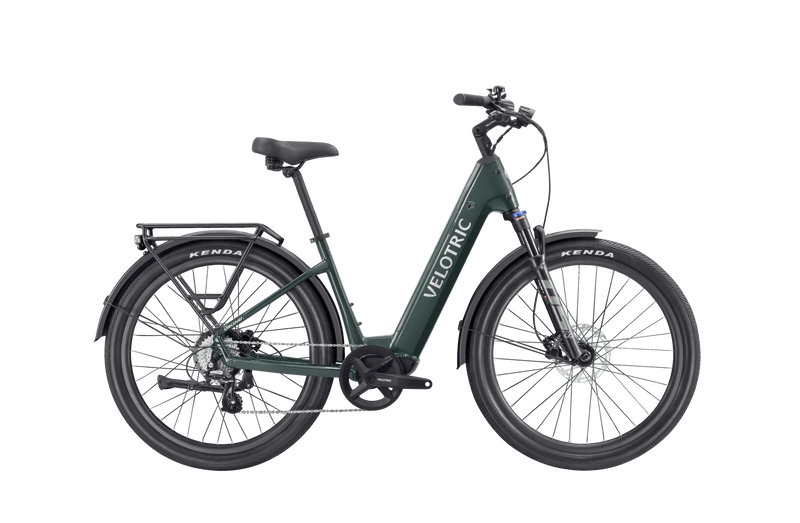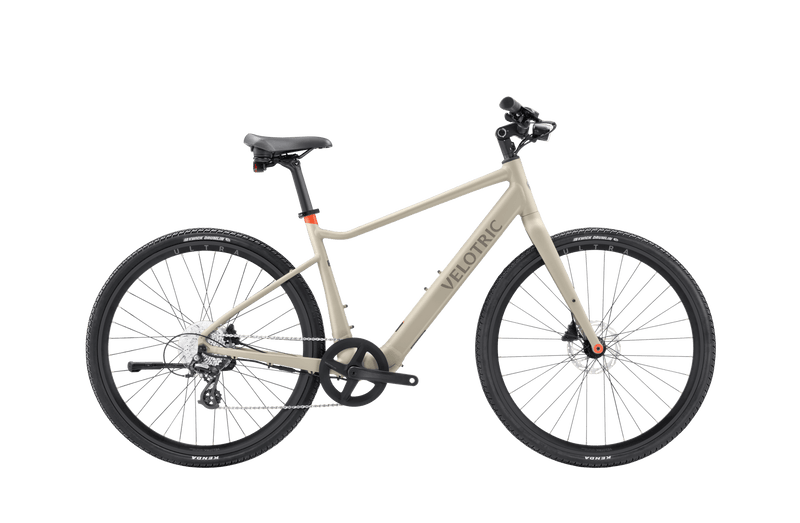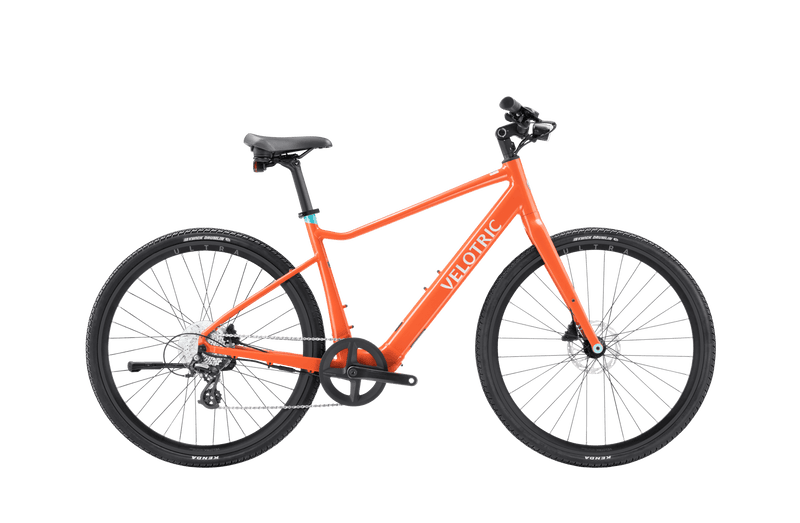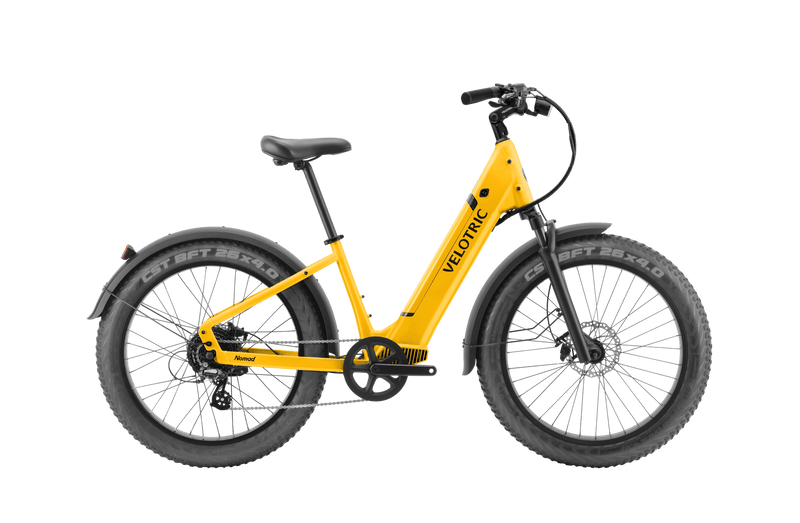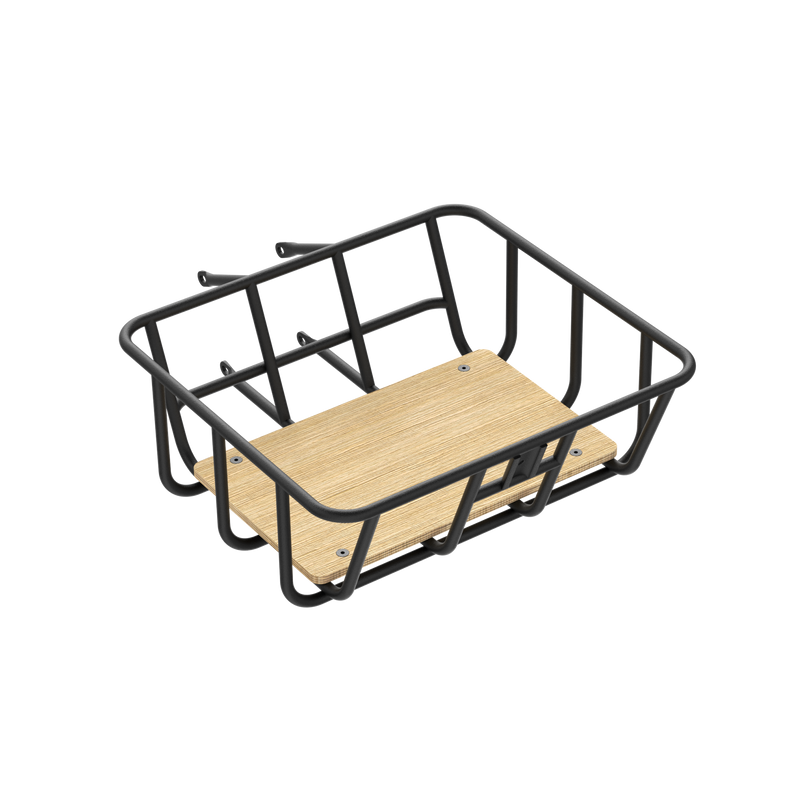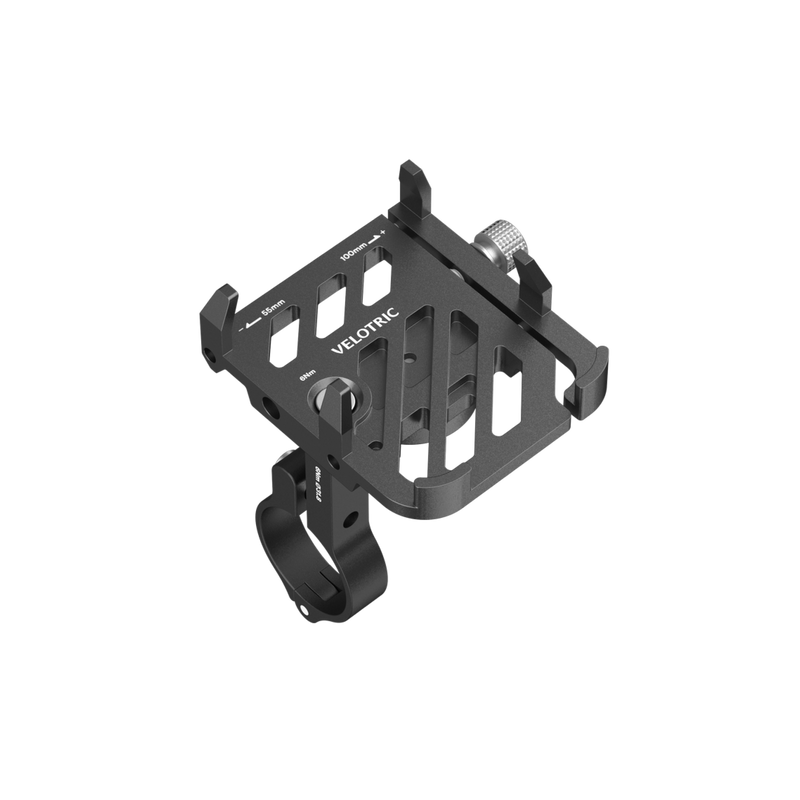Electric bikes are unique from regular bikes thanks to their motors. Powered by a rechargeable battery, e-bike motors assist the cyclist in pedaling and help propel the bike forward. With the e-bike motor’s support, cyclists can conserve energy to ride farther and longer.
E-bike motors also help build and maintain speed. But how fast can an e-bike go? In this guide, we’ll discuss e-bike speeds, including how fast e-bikes can go and what factors impact their speed.
Top speeds of electric bikes
There are three classes of e-bikes, each varying in speed and assist level. While general industry standards exist, not all states have adopted these classifications. Check your state and local rules before buying an e-bike.
- Class 1 e-bike. Class 1 e-bikes, or pedelecs, have a low-power motor and pedal assist that engages at speeds up to 20 mph. Once the maximum speed is reached, the motor cuts out and the cyclist has to pedal without support.
- Class 2 e-bike. Class 2 e-bikes also have a motor and pedal assist that engages up to 20 mph. Most class 2 e-bikes have a throttle assist function in addition to pedal assist.
- Class 3 e-bike. Class 3 e-bikes have a more powerful motor that engages at higher top speeds up to 28 mph. They have pedal assist and, in some cases, throttle assist.
The difference between pedal assist and throttle assist
The two main functions of e-bike motors are pedal assist and throttle assist. All e-bikes have pedal assist, which helps propel the bike forward while you’re pedaling. Some e-bikes also have throttle assist, which propels the bike forward even when you’re not pedaling. With both pedal and throttle assist, the e-bike motor cuts out when the bike reaches a maximum speed.
For class 1 e-bikes, pedal assist stops working once you exceed 20 mph. The bike will still move forward, and you can go faster than 20 mph, but the motor won’t engage. All electric assistance will stop, and you’ll have to rely on manual pedal power alone.
The same is true of throttle assist. If you’re on a class 2 e-bike with throttle assist and you exceed the top speed of 20 mph, the function will stop working. Again, you can go faster than 20 mph but only with pedal power, not motor power.
Class 3 e-bikes are the only bikes that engage the motor past 20 mph. These bikes allow pedal assist and throttle assist up to 28 mph before cutting off.
Factors that affect electric bike speed
An e-bike’s classification will tell you the maximum speed at which the motor will engage. However, an e-bike’s actual top speed depends on multiple factors, including the following:
- Motor power. E-bike motor power is measured in watts (W), with each e-bike receiving a rated wattage and peak wattage. The rated wattage indicates the power the motor can sustain comfortably for an extended time. The peak wattage indicates the maximum power the bike can attain (but not sustain). For example, the Velotric Discover 1 has a 500/900W rated/peak motor, while the Nomad 1 has a 750 rated/motor. Higher wattage means more power and higher speed.
- Battery capacity and life. Since the battery powers the motor, its capacity impacts your speed. The battery’s life impacts its range, or how far the bike can go before the battery dies. For example, the Discover has a range of 65 miles, while the Nomad 1 has a range of 55 miles.
- Pedal assist mode. If you put more strain on the e-bike battery, you use it up faster, negatively impacting motor speed. Using sustained throttle assist or pedal assist will use the battery up faster. Most bikes have step-wise pedal assist, which allows you to adjust the level of pedal assist to conserve battery life. Velotric bikes have five pedal assist levels.
- Weight of the bike and rider. E-bike models vary in weight, some being lighter for easy transport and others being heavier for durability. Furthermore, cyclists come in varying weights, as do the loads they carry on their e-bikes. Lighter e-bikes often go faster and farther than heavier ones, even when heavier models have more powerful motors. For example, Velotric’s all-terrain Nomad e-bike has a more powerful motor but, because the bike weighs more, less range than the commuter-friendly Discover 1 e-bike.
- Terrain. Rough terrain can slow down an e-bike. If you’re riding on unpaved surfaces, like gravel, sand, and dirt, you won’t go as fast as when riding on smoother paved surfaces. Inclines also make a difference. You’ll go faster on a flat surface than when cycling uphill and even faster going downhill.
- Wind resistance. External factors like the weather and wind resistance can also impact the speed of an electric bike. To reduce drag, you can minimize wind resistance by wearing form-fitting cycling clothing and crouching low over the handlebars.
Speed limits for e-bikes
E-bikes are generally required to follow the rules of the road. So, whether you’re on a bike trail, shared-use path, or road, you’re required to follow all posted speed limits.
In addition, manufacturers often make recommendations for how fast their e-bikes should go. For example, Velotric’s Discover 1 has a rated/peak motor of 500/900W, and we recommend riding at speeds that maintain motor usage close to 500W.
Finally, even the fastest electric bikes need to adapt to the terrain. Cyclists should slow down on slick surfaces and ride cautiously on rocky terrain. You should also consider safety and adapt your speed for congested traffic, large crowds, or nighttime conditions.
Safety considerations for riding at high speeds
An e-bike is a safe and convenient way to get around, and you can use it for everything from commuting to work to exploring the great outdoors. However, since e-bikes can reach higher speeds than traditional bicycles, it’s important to follow some basic safety guidelines:
- Wear safety gear. Always wear a helmet when riding to protect against traumatic brain injuries (especially if your state requires helmets). We also recommend wearing a reflective vest to improve visibility, cycling gloves for a better grip on the handlebars, and weather-appropriate clothing.
- Be aware of your surroundings. Don’t text while cycling or do anything else that could distract you. Keep an eye on motorists, pedestrians, and other cyclists in front of you, and use your rearview mirrors to check behind you.
- Follow traffic rules. Obey all traffic rules, including stop signs, traffic lights, and yield signs. If you’re on a shared-use path for pedestrians and cyclists, yield to pedestrians. Also, know your local e-bike laws. Our state guides cover e-bike rules for New York, Pennsylvania, and other states.
- Brake the right way. E-bikes are heavier than traditional bike brakes, so it takes them longer to slow down and come to a complete stop. Leave sufficient time for braking to avoid collisions. Learn more about e-bike brakes.
- Maintain your e-bike. Avoiding accidents starts with a well-maintained e-bike. Regularly clean your e-bike and perform basic maintenance tasks, and have your bike professionally serviced annually. To keep your e-bike in top form, use our e-bike maintenance checklist.
E-bike speed FAQ
Have more questions about the speed of an e-bike? The below frequently asked questions cover the essentials.
What is the fastest an electric bike can go?
The maximum speed of an e-bike is determined by its class. Class 1 and 2 e-bikes have a maximum assisted speed of 20 mph, while class 3 e-bikes have a maximum assisted speed of 28 mph.
Electric bikes can go faster than top speeds using pedal power only, but the electric motor will cut off once the e-bike reaches its maximum assisted speed.
Where can you ride an electric bike the fastest?
If you want to ride an e-bike at maximum speed, look for a smooth surface without impediments that might slow you down. A flat, paved surface is ideal. You can reach even higher speeds if you go downhill.
That said, be conscious of local regulations regarding e-bike speeds. Many municipalities require e-bike riders to obey all posted speed limits and follow the same traffic laws as motorists.
Velotric has the e-bike for you
How fast do electric bikes go? The answer depends on many factors, from the electric bicycle’s class to motor power, bike weight, and wind speed. But a high-quality e-bike will ensure your bike can sustain top speeds without issue.
Velotric offers quality e-bikes that can take you where you want at the perfect speed. Velotric bikes are rigorously tested and feature batteries certified by Underwriters Laboratories (UL2271). Additionally, Discover 1’s Step-Thru model is already UL2849 certified while the Nomad 1 is currently undergoing certification. Whether you’re looking to enjoy off-road adventures on the Nomad 1 or ride to work in style on the Discover 1, Velotric has the e-bike for you.
Find your Velotric bike today.

































